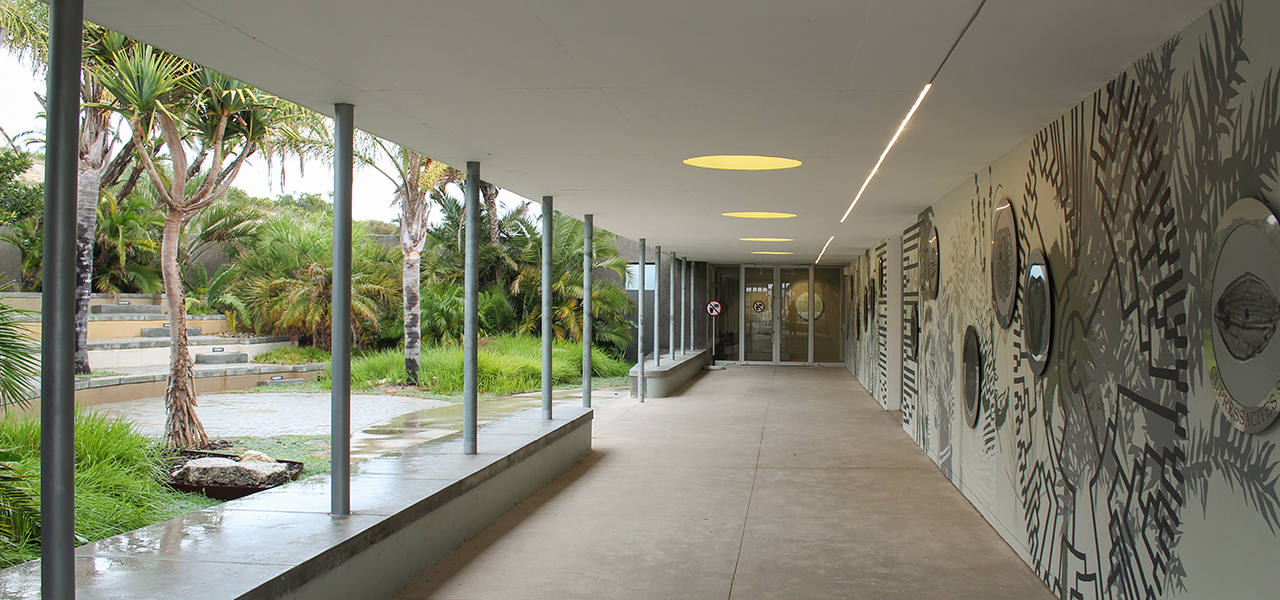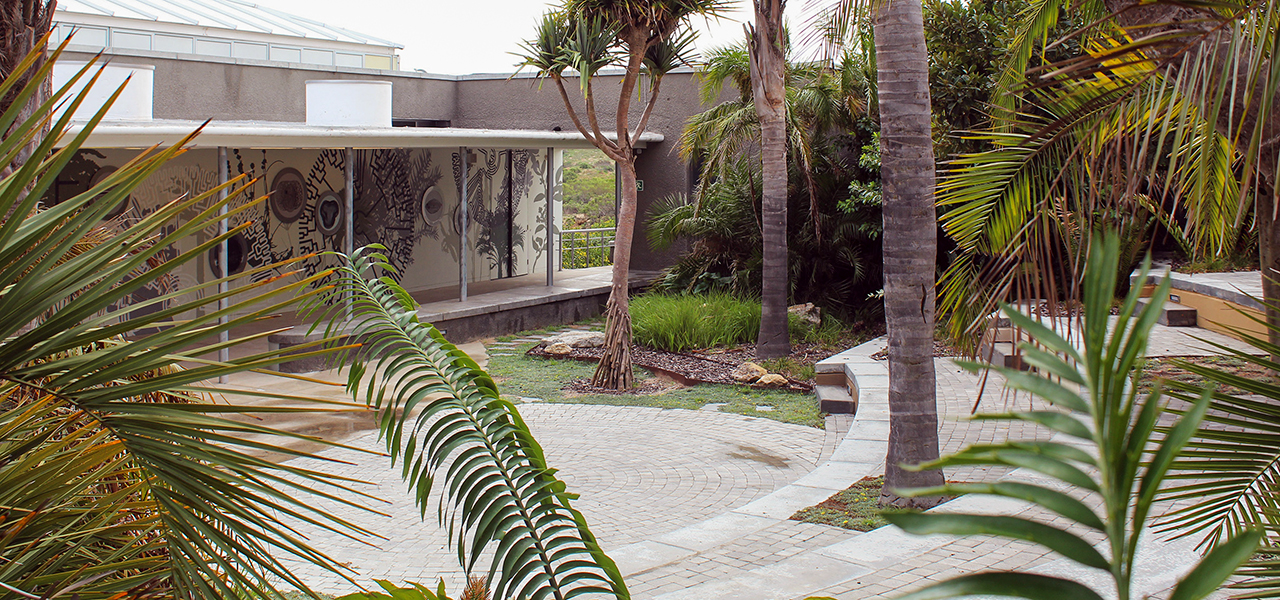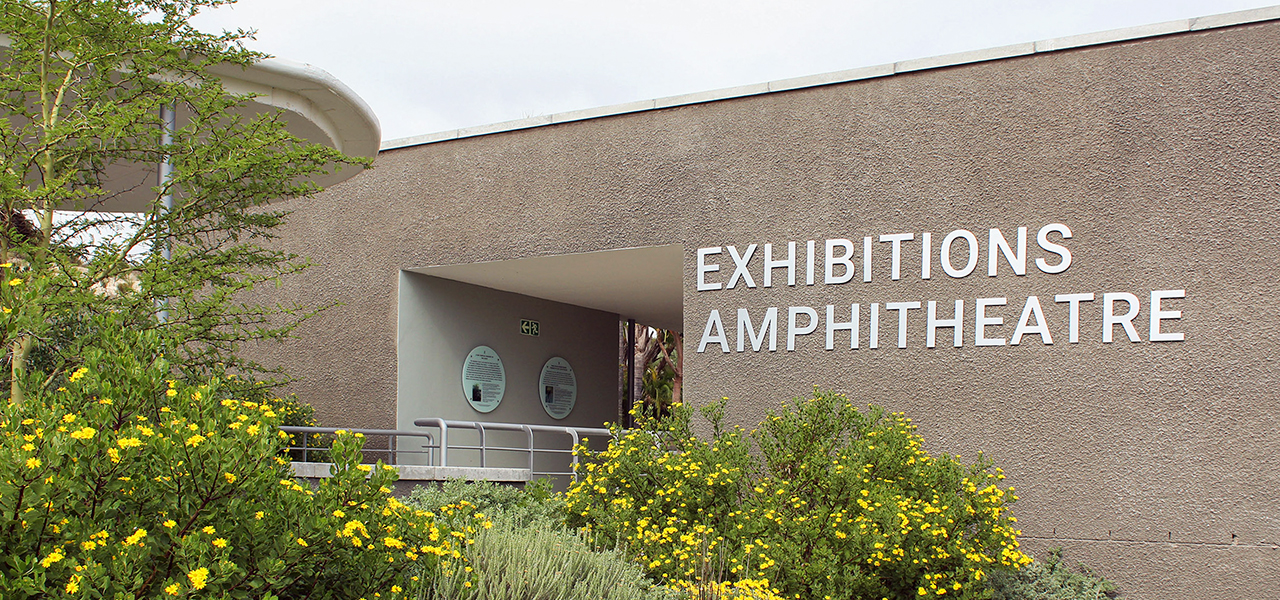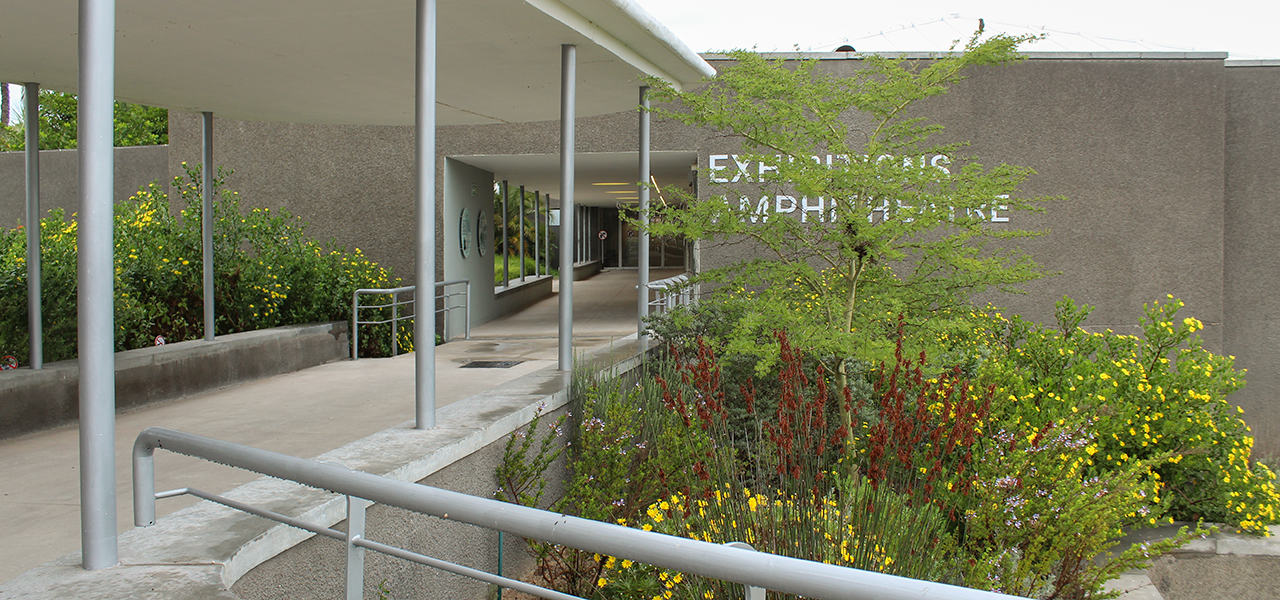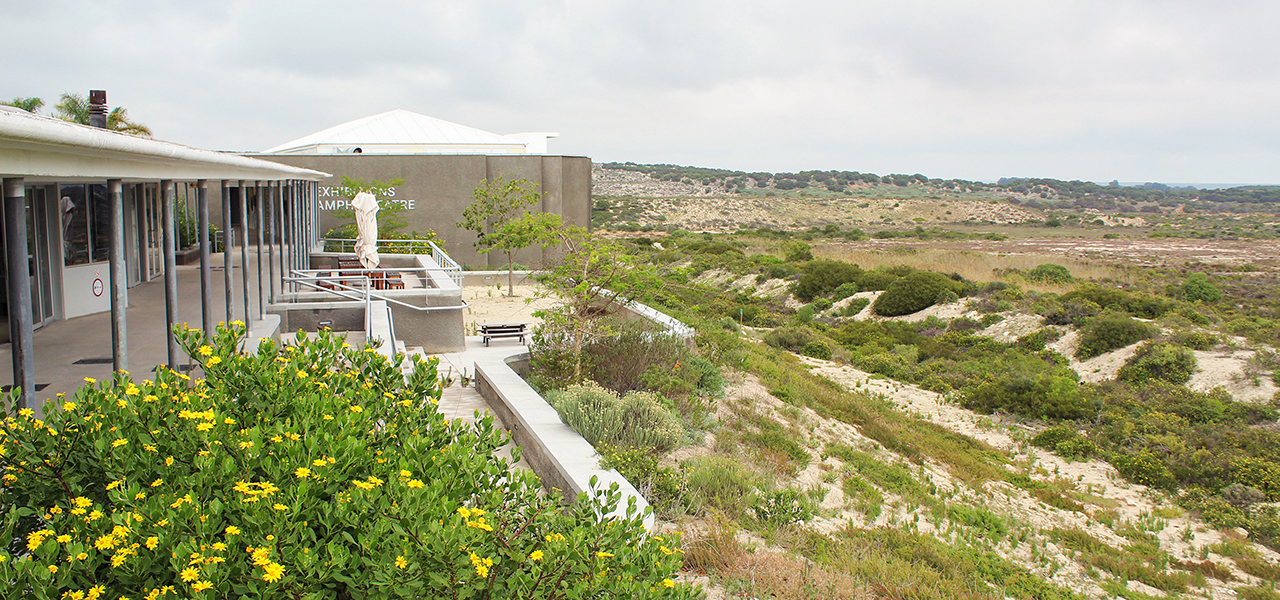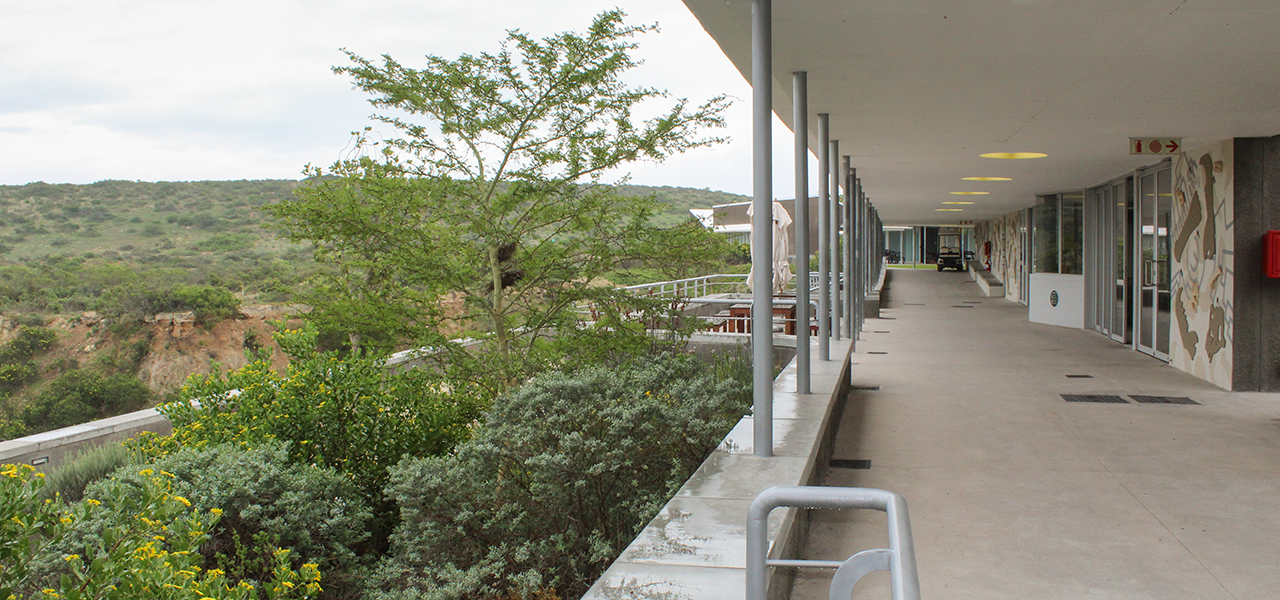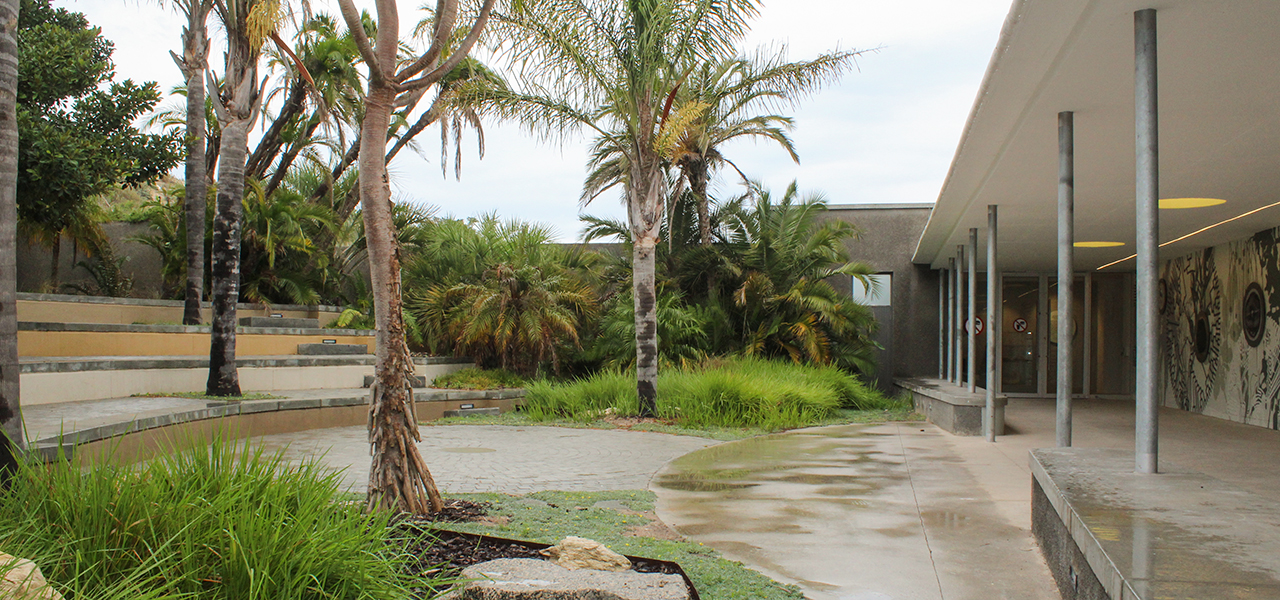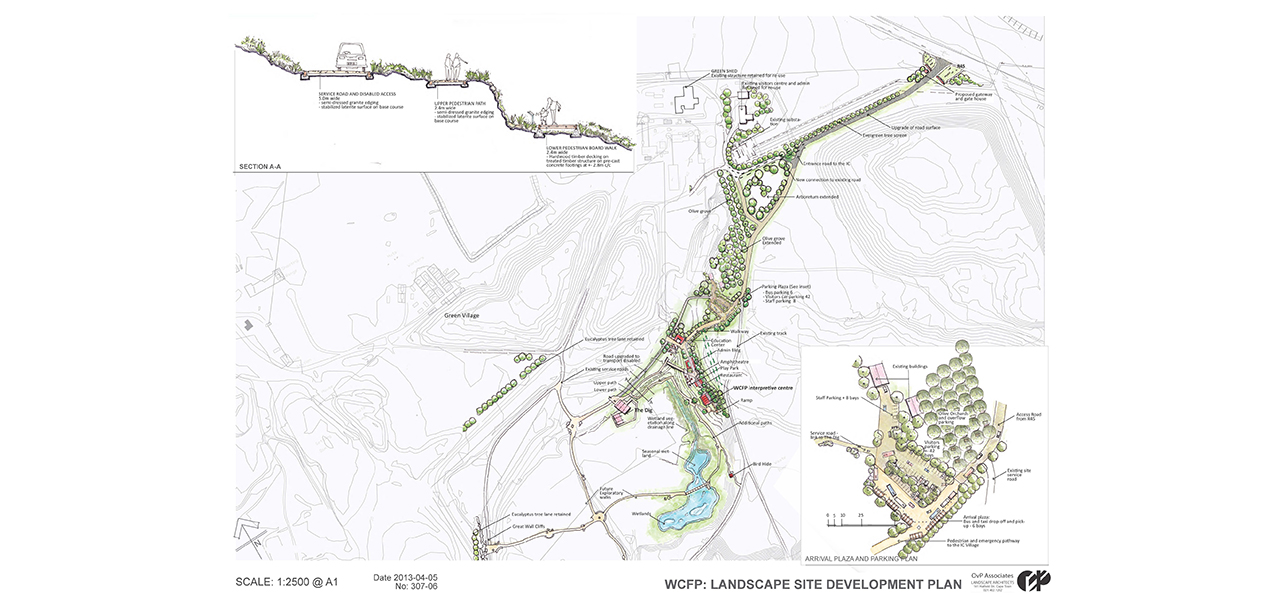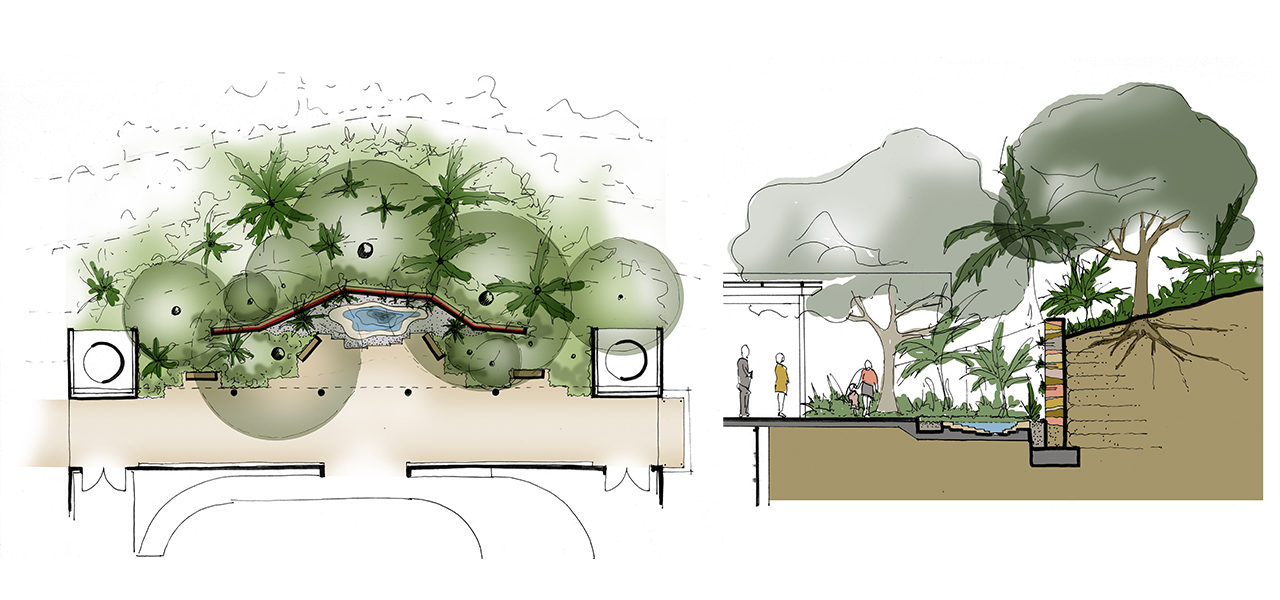The West Coast Fossil Park is a national heritage site that represents a five-million-year-old fossil find uncovered through phosphate mining 50 years ago.
When the mining potential was exhausted, the land was transferred to a trust in the 1980’s. The decision was then made to develop the site as a public amenity while supporting on-going excavations and scientific research.
The National Lottery contributed towards the construction of the new interpretive centre which includes tourist reception, staff offices, a restaurant and a museum where fossils are displayed.
This landscape project required working from commencement with a multi-disciplinary design team with emphasis on the integration of sensitive environmental and archeologically constraints. The design was an educative and re-iterative process where the landscape architect’s role was to explore design options, assist with site selections and evaluate design criteria for the placement of the buildings in the landscape.
This was particularly relevant due to the possible and largely unknown position of other archaeological remains.
The eventual site selection was considered in terms of minimising the possible visual & archaeological impacts and the relationship of the new buildings to the existing fossil site.
The entry point to the site, as well as vehicular and pedestrian circulation (including parking areas), were carefully considered to break up the scale and reduce the visual impacts. The pathway system from the parking area to the building and from the building to the find site were also carefully planned to optimise the journey and visual experiences.
The design brief called for the site to be developed as a world class eco-tourism destination, to reveal and interpret the layers of archaeological history, to carefully consider the site as an archaeological resource where impacts were to be minimised and to maintain the site for on-going research.
A special interpretive garden element was required to illustrate a specific ‘snapshot in archaeological time’ and for outdoor environmental and archaeological education.
The landscape design sought to maximise the uniqueness of the Strandveld biome, to embrace the design process so as to give full meaning to both the scientific and architectural disciplines and to mitigate the impact of the buildings.
The landscape project was around mediating between the buildings and associated circulation elements and the landscape. The buildings were placed on the existing phosphate mining landfill mounds which resulted in a substantial disturbance footprint which needed to be restored after construction. The project was completed during the extended drought period and conditions for planting were not favourable. A combination of climate constraints, poor soils and limited budget prevailed. Consideration of local bio-diversity, fauna & flora management was undertaken through research and information sourced from scientific data and local expertise.
The restoration of the large disturbed ‘low impact’ areas was through a method of hydro-seeding with seed harvested from the site and local area. We were fortunate to have a specialist contractor based in the area, with extensive local botanical knowledge to engage with this process (VULA – Deon van Eerden).
At the edges of the building (‘high impact’ areas), more extensive planting was provided for immediate impact, scale, interest, colour and texture to showcase the diversity of endemic plant species.
Court-yard areas have been lawned in small areas for visitor relaxation and tree planting for shade was limited to hardy acacia species.
The visitors centre garden is a court-yard planted with trees for shade and a lawn for relaxation & visual relief from the harsh surroundings.
A terraced court-yard garden was created at the end of the walkway adjacent to the museum. The garden is planted to represent a ‘snapshot’ in archaeological time which existed over five million years ago (Pleistocene period), around the time of the animals found in the archaeological dig and was designed in consultation with scientific paleo-botanic input from specialist archaeologists.
The planting installation was during the recent drought and needed to be carefully phased to meet the project opening in mid-summer. Hydro-seeding was executed just before the onset of the rainfall period. Some of the planting was delayed until the onset of cooler weather and the last infill planting was installed when there was a better chance of plant establishment.
This Project received an ILASA Commendation Award for Excellence in the Field in 2019.

